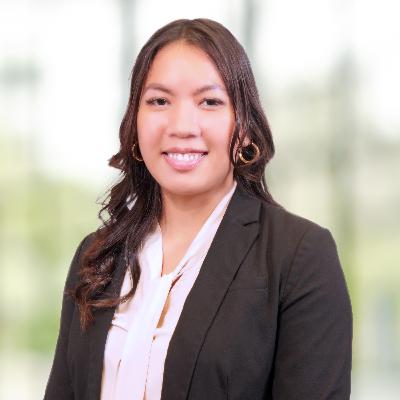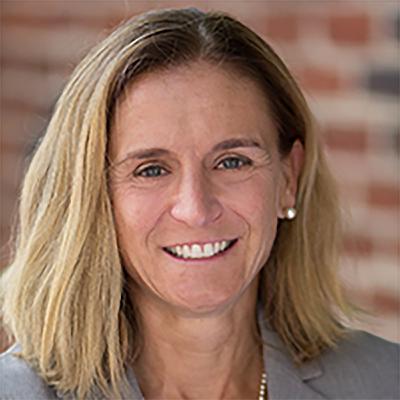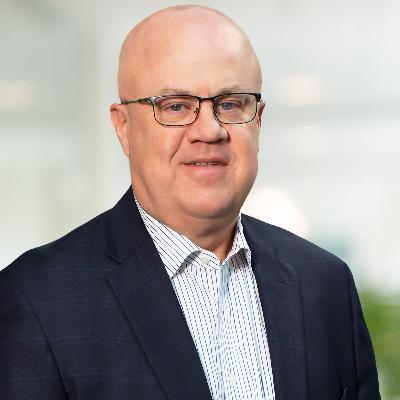Kim Williams - How ACO REACH Transforms Quality and Equity
Description
In this episode we hear from Kim Williams, Senior Manager of Government Programs at CHESS Health Solutions about the value of ACO REACH. She shares her expertise on what it is, why it was created, and how it benefits the patient and provider by being a care collaboration model that improves quality while incentivizing health equity.
Kim Williams, welcome to the Move to Value podcast.
Kim Williams
Yeah. Thank you so much for having me.
It's really a pleasure to be here.
Thomas Royal
So Kim, today I want to explore some of your knowledge that you have and your expertise.
So let's talk about ACO reach first.
Can you explain what ACO reach stands for and how it differs from the other ACO models?
Kim Williams
Sure, I'm happy to.
ACO REACH stands for realizing equity access and community health.
And really, the differentiator of this model is in the name itself.
It's looking at HealthEquity and getting patients access to care in a timely fashion, but it's also looking at social needs and also working with community health providers to have a more coordinated approach in the patient's care journey. And so a lot of the programs requirements that we see
are centered around those core principles.
And this is a huge shift away from your traditional fee for service model, where everything is based on quantity of services to now looking at value.
Now we are looking at not just at the bigger picture. We're looking at the entire picture.
We're looking under the rugs and we're addressing root causes in this ACO reach model, also part of what makes this model unique is in the innovative payment structure and that is what I call a capitation-like model.
So this means that CMS will give us a prospective payment upfront and providers have the flexibility to structure that payment however they want to do that in a multitude of different ways.
So one option is that a provider can elect to do a fee-for-service pass through where you are paid 100% of what you Bill to Medicare. Or you can elect to get 90% of what Medicare pays you.
With an option to earn back bonus payments.
Or if you don't want any of those options, you can also say, hey, just pay me a per member per month payment upfront.
So that's called pmpm.
Pay me that amount monthly or however they want to structure that arrangement with the ACO.
So there's a multitude of different ways that you can go about this, and really the idea is that if the provider knows how much they're receiving up front to care for their beneficiaries, then they will be motivated to stay under that threshold and that benchmark.
And that's really where the shared savings comes in.
So I think the ability to select these payment options based on what you're comfortable with is not something you typically would see in other models outside of ACO reach.
Thomas Royal
Oh, that does sound pretty unique.
Kim Williams
Yeah.
Thomas Royal
So he touched on this a little bit, but I'd like to dig a little bit deeper and and if you could tell me what are the core goals of ACO reach and how does it align with the broader shift towards value based care and how does this model prioritize Health Equity and patient centered care in its design?
Kim Williams
Yeah. So, earlier you heard me mention that the goals of this model are centered around Health Equity access and community health.
And so I want to camp on certain components of those levers.
So I want to expand on why that matters and talk about the Health Equity for example. So as we're moving away from again the traditional fee for service and moving towards value based care, you see more and more payers prioritizing patient, HealthEquity and social determinants of health.
Or SDOH initiatives that are designed to impact care outside of the clinical settings. And that's because we know if a patient does not have transportation or if they have food insecurities, for example, well, they may not be interested in going to get their cancer screenings or their medication refill and so this impacts their health and it contributes to the total cost of care that we don't want in our healthcare system today.
And so as we shift to value based care, we have to look at the whole picture.
We have got to solve for social issues and to figure out what that means for your community.
You do have to look at the inequities within your region and the ACO reach model.
Really prioritizes this mindset.
So the Health Equity plan, for example, that is a requirement under this model that allows us to target the problems in our backyard that we know exist today. But because of the lack of resources or conflicting priorities, even the processes that we have today to take care of our vulnerable patients and these populations has not been maximized to its fullest potential, right. The Health Equity plan in itself is very patient centered, and it's crafted with specific solutions to what we know about our patients today. But that's going to require that you do your research to figure out what disparities you have, so that means looking at the data, figuring out solutions for what you want to solve.
And under this requirement, they're going to ask us to write up an implementation plan that tells CMMI how you plan to make your health disparities better.
What types of resources do you think you're going to use?
How are you planning to mitigate risk of further exacerbating this disparity and and how do you want to measure and define success, right?
So if you think about all of that, it's not a one-size-fits-all approach and it's not something one person or one organization can accomplish.
The Health Equity plan is not going to be very successful.
If you don't engage your executive teams, your community leaders and your physician champions.
So it's going to require that everyone from the top down prioritize and collaborate together to make this happen.
And that's what chess has had experience in doing in ACO reach.
We knew we wanted to impact patients in certain geographical settings really in those vulnerable territory. So, you know, think about.
Your low income housing zones.
Your flood zones.
Think about the areas that has a lack of access to transportation, and so we brought all of this data. All of this information to our physician leaders and our executive leadership teams. And we said, well, here's the data. Here's what we know. Now, how do we want to work together.
What types of interventions do you think are best for our patients?
And so I think it it all begins there when we're wanting to target Health Equity.
Now thinking about the broader shift to value-based care.
Here I also think it's important to call out again that innovative payment delivery that this model offers.
So I think the model creators know that there are communities who face significant risk factors like the ones in our Health Equity plan and and probably more outside of that as well.
And so that's where they will give you this upfront payment so you can invest in resources to help wherever you think may be helpful, right?
Maybe you want to invest in a risk stratifying tool to figure out who's in the high risk or rising risk category.
With this upfront payment you can implement these tools, or if it's not technology that you need, you can hire more social workers and or care management teams to support whatever it is you think can further your journey and value based care and is best for your patients.
So I think REACH is really designed to sustain transformation and population health and now we're tackling deep rooted issues that would otherwise be swept under the rug by maybe a lack of resources or lack of awareness, and that's really going to reshape how we deliver care today and in the future with this model.
Thomas Royal
That sounds really beneficial for the patient, Kim.
That sounds like it's it's a shift away from.
You know how things have been going as far as the determinants? I think that's really important. And I heard you talk about the upfront payment.
Kim Williams
Yeah.
Thomas Royal
So I mean you, if you include that in, how does participating in in the reach impact a day-to-day operations of the provider?
And what are some other key financial incentives for those participating?
Kim Williams
Yeah. So I want to break that down into two different buckets of how that's going to impact the providers and the practices, right.
Thomas Royal
OK.
Kim Williams
One from an operations standpoint and one from a financial impact standpoint. Operationally I think of ACO reach as a care collaboration type of model in one area that the collaborative effort comes into play is how we impact the three claims based quality measures in this program.
Thomas Royal
Alright.
Kim Williams
Now, in MSSP and other contracts, we see more clinical quality measures that were being held accountable to. But in Reach 3 out of the four measures has to do with keeping patients out of the hospital, preventing readmission and unplanned admissions and getting patients their timely follow up visits, post discharge and so operationally, providers and staff, they do need to work together to help their patients avoid these hospital visits.
But we also want providers to do those comprehensive disease management programs, those t










